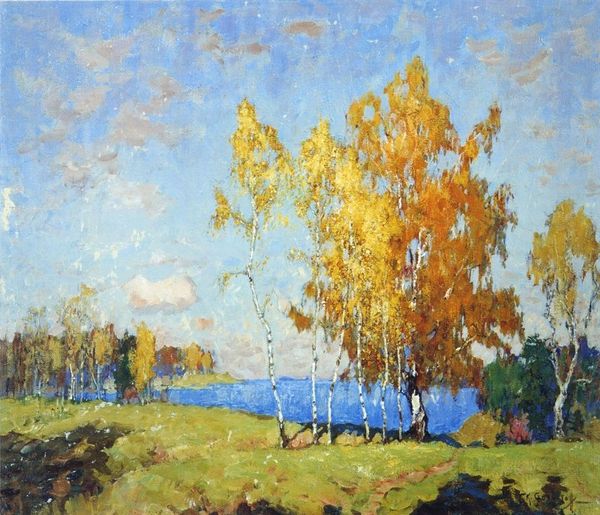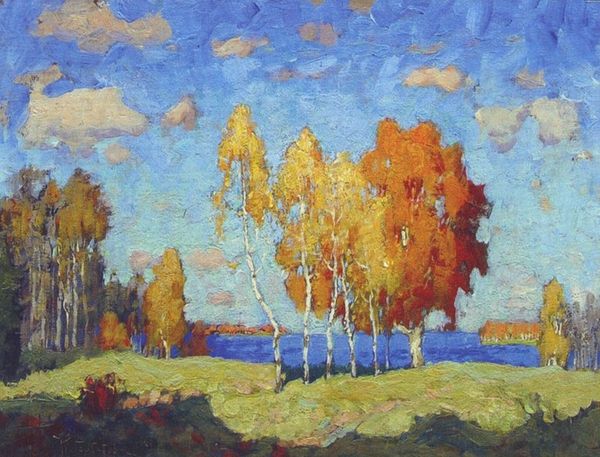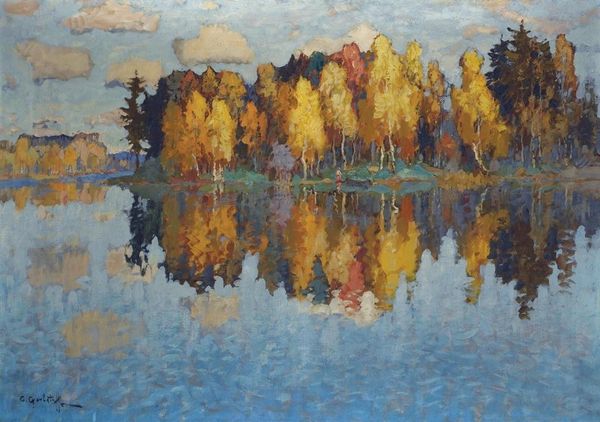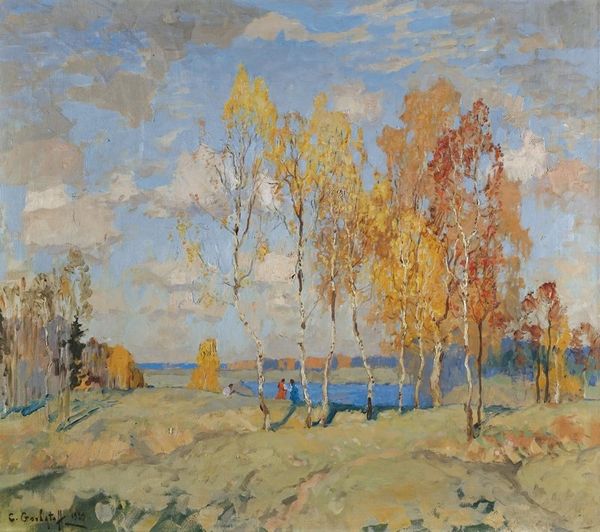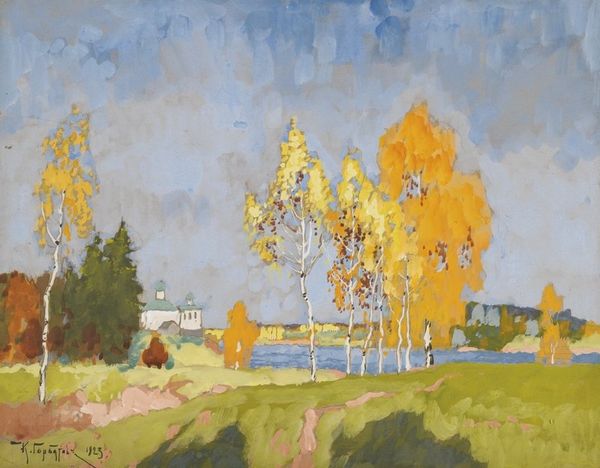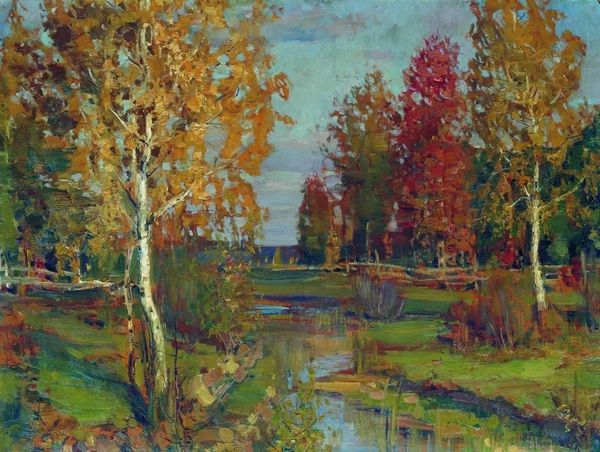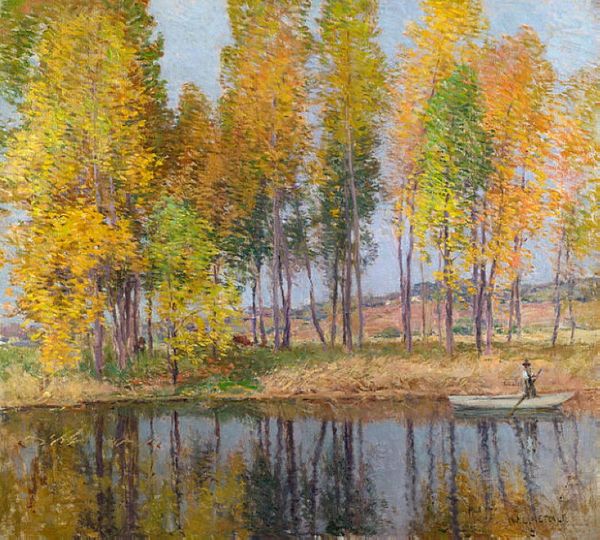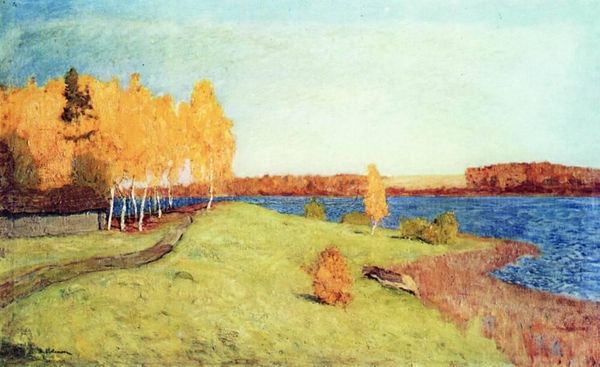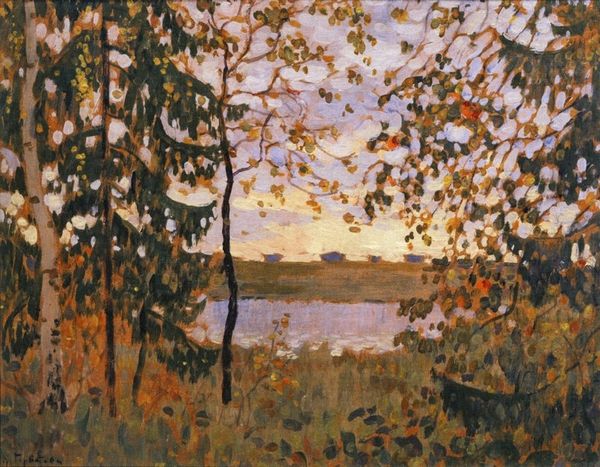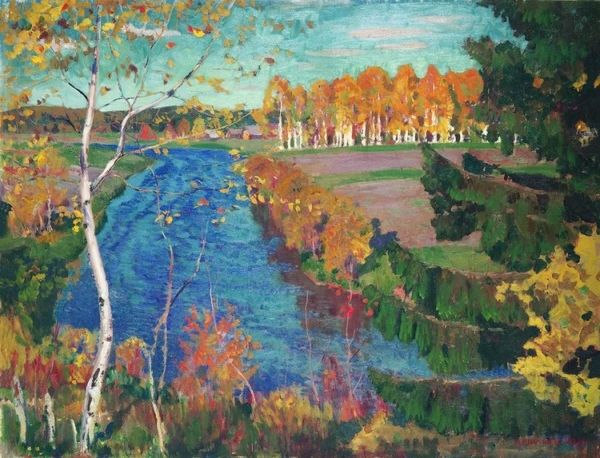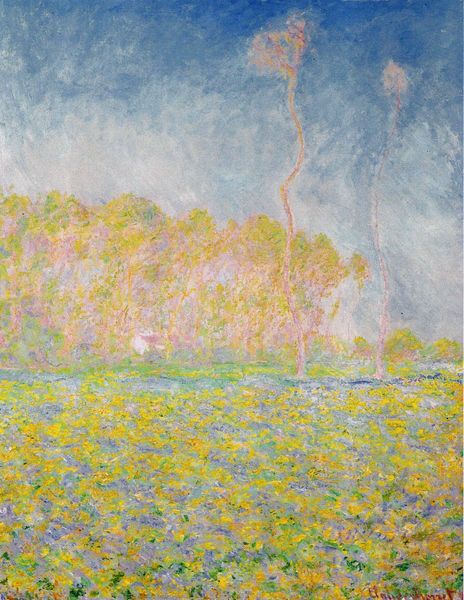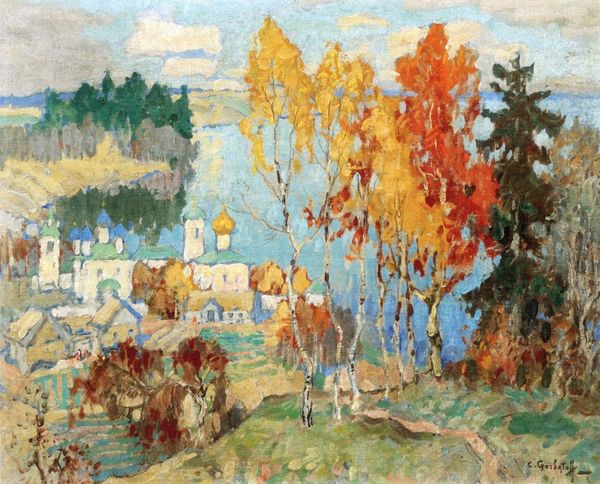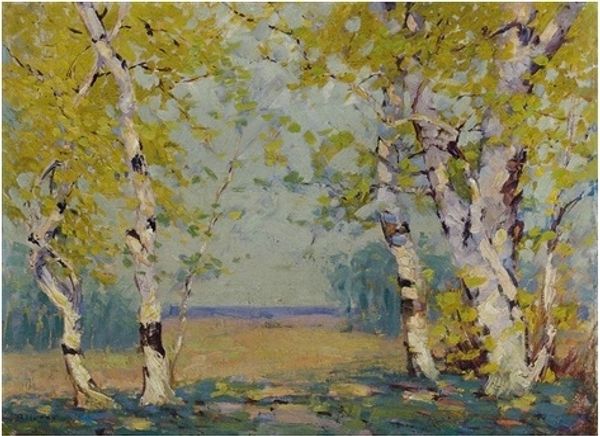
Copyright: Public domain
Curator: Konstantin Gorbatov's oil painting "The Last Days of Summer," created in 1922, offers us a fascinating glimpse into post-impressionist landscape art. Editor: Immediately, the chromatic intensity grabs my attention. That vivid gold, applied with visible impasto, sings against the sky's muted blues. It's melancholic but brilliant, evocative. Curator: Indeed, the structural tension arises from the interplay between the almost geometrically rendered clouds and the organic, loosely rendered forms of the trees. What do you make of it? Editor: For me, it is interesting to examine the texture imparted by the artist's technique. You can see distinct traces of the brushwork and palpable sense of labor embedded in the painting's very surface. These tangible marks underscore the effort, reminding me that the landscape itself has been labored over. Curator: Certainly. Notice how the composition invites the eye to traverse the scene—from the foreground's textured meadow to the serene expanse of water in the background. It’s a strategic choreography. Editor: The painting seems to romanticize nature even as it underscores its manipulation. I also wonder about the source of the materials, given Gorbatov's context—the oils, the canvas... what were the production conditions? It surely gives another point of entry into interpreting Gorbatov’s relationship to landscape painting as such. Curator: That's very interesting. In formal terms, the verticality of the trees contrasts beautifully with the horizontality of the distant shore, thus creating a sense of depth that pulls us into the pictorial space. Editor: While acknowledging those compositional qualities, it makes me curious to examine the context within which such seemingly nostalgic representations flourished. The echoes of labor are faint in comparison to other forms of representation, but definitely discernible. Curator: "The Last Days of Summer" encapsulates a delicate dance between observation and abstraction—a captivating resolution of color, form, and light. Editor: And by attending to the labor, to the artist's touch, we see an image ripe with layers of possible interpretation.
Comments
No comments
Be the first to comment and join the conversation on the ultimate creative platform.
